The rise and fall of Rapidshare
How Christian Alexander Schmid created the world's most popular file-sharing service, got caught in an storm of copyright lawsuits and still got away with nearly no consequences
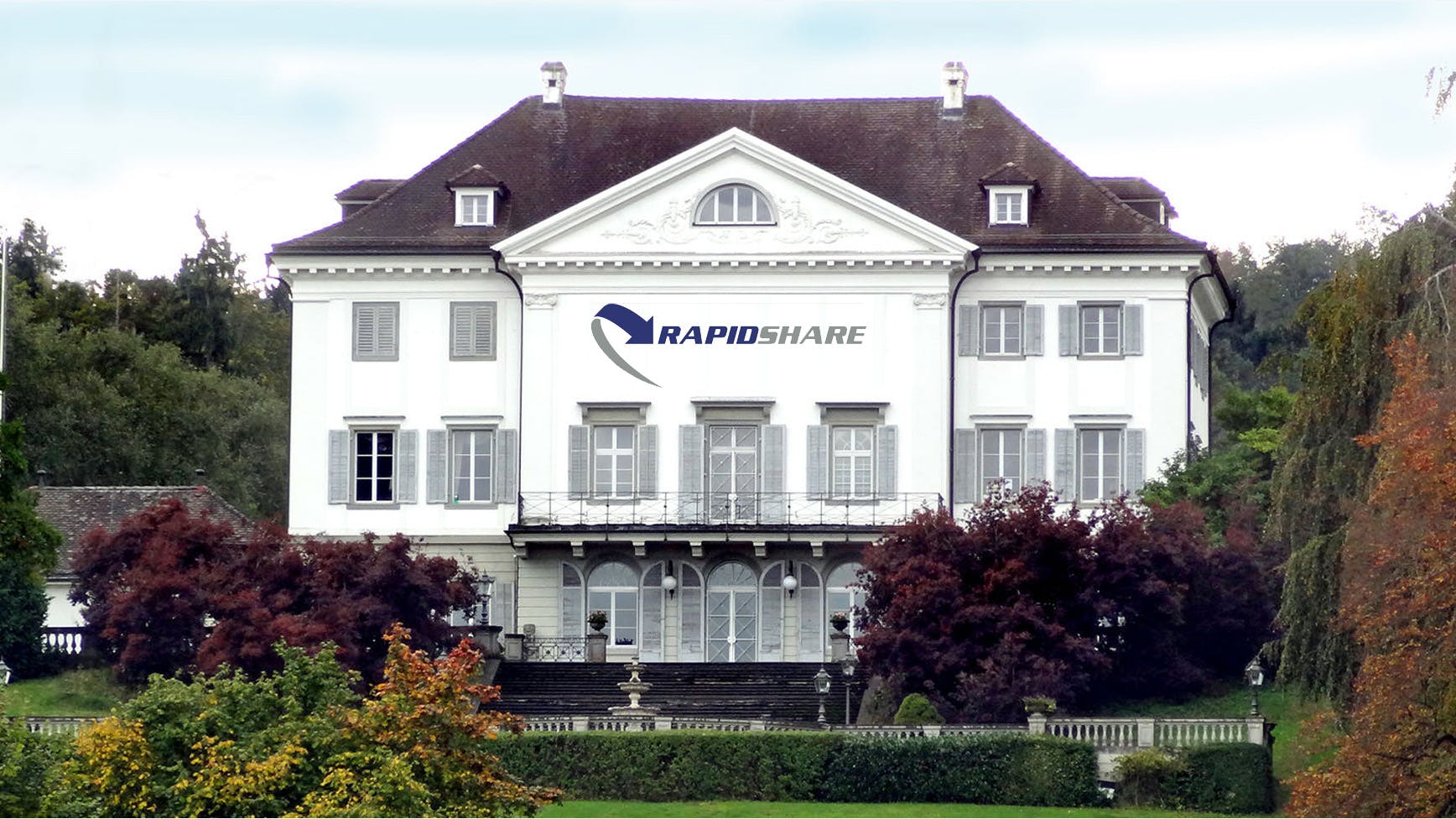

Introduction
In the early 2000s, the internet was a very different place. There was no Facebook, no Twitter, no Instagram, no TikTok. The internet was a place where you could find information, but not much more. People mainly used to share files via email or FTP. But then, in 2004, a new service called Rapidshare was launched. It allowed users to upload files and share them with others. Around 2009 it was among the Internet's 20 most visited websites.
But what happened to rapidshare? And who were the people behind it? And what does this all have to do with a castle in Switzerland that was built by the stepson of Napoleon? But first, let's start at the beginning.
The beginnings
Christian Alexander Schmid is a very private person and only a few photos of him are to be found on the internet. Interviews are also a rarity, but due to his success with Rapidshare, years of lawsuits and his purchase of "Schloss Eugensberg" a few newspapers picked up his story here and there.
Early life
He was born in the south of Germany in 1981 but moved to "Mullheim an der Ruhr" with his parents where he then grew up. His parents were entrepreneurs, which inspired him to start his own ventures. He decided against a university degree and instead invested all of his time into a service named "Rapidtec". It was an online shop system, which did not take off but according to Schmid, it was a great learning experience.
Notable to mention here, this was in the earliest days of the internet, when online shopping wasn't really a thing yet and Amazon had just started. So Alexander already seemed to have a sense for spotting the next big thing.
Rapidforum
He then launched "Rapidforum", a service that allowed website owners to easily add a forum to their website. Compared to Rapidtec, this was quite a big success and now the money started to come in.
One of his main problems with Rapidforum was attaching big files to a discussion. So he decided to create a service that would allow users to upload files and share them with others.
Rapidshare is born
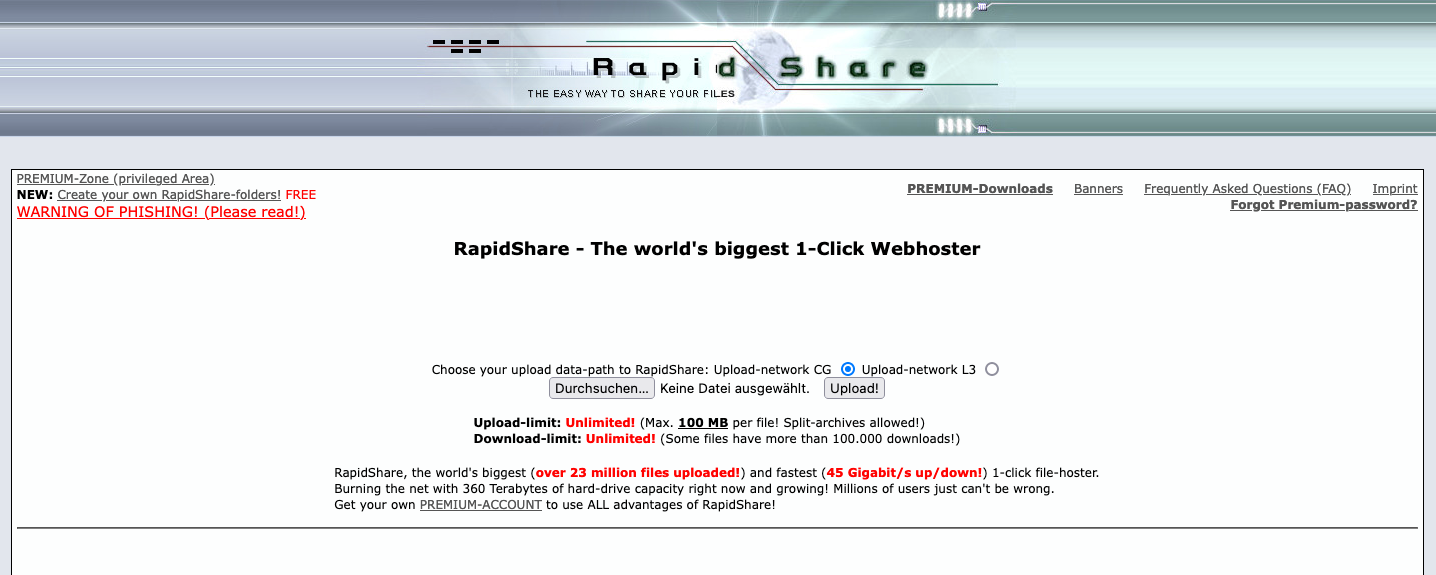
Screenshot of rapidshare.com from 2006 (archive.org)
He registered the rapidshare.com domain in 2002, but initially started his venture under the rapidshare.de domain. The site first launched in 2004 - the same year Facebook was founded.
It is even speculated that rapidshare was the first "1-Click Hoster" of how we know them today, arriving much earlier than Dropbox for example, which was founded in 2007.
The files were stored directly on Rapidshare's servers and could be downloaded by anyone who had the link. The service became popular fast and grew rapidly.
The rapid rise
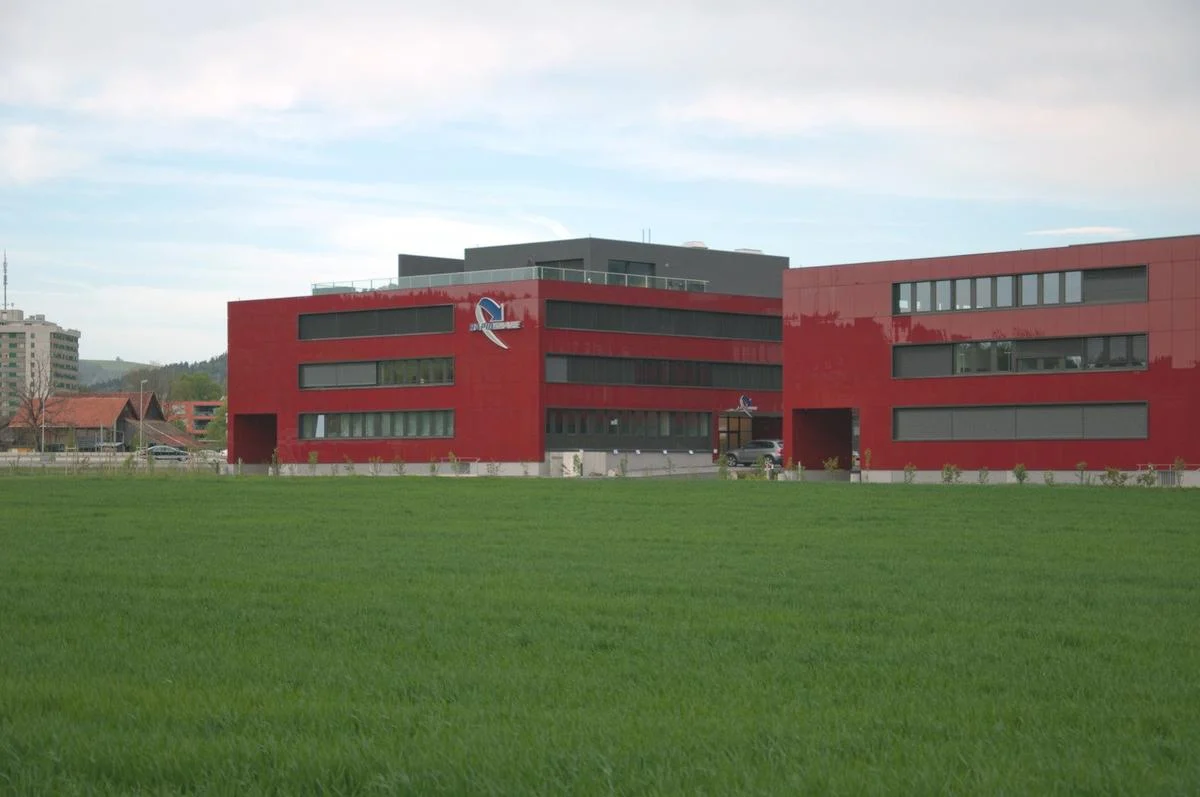
The headquarters of Rapidshare in Baar (wikipedia.org)
In 2006 Christian Alexander Schmid moved to Switzerland and Rapidshare came with him. Rapidshare AG was now headquartered in Cham (a few years later they moved to Baar) in the canton of Zug. A place in Switzerland notorious for very low corporate taxes.
But the company was not the only thing he brought with him. He came with a lot of money.
Public records of his tax filings showed that in 2006, he already had a fortune of 11 million swiss francs and declared a yearly income of 17 million CHF. He even surpassed the CEO of Nestle, which declared 13 million CHF that year. At that time he was only 26 years old. And he was just getting started.
In 2008 they already had 25 employees and 42 million daily users. At the beginning of 2010 their headcount grew to 50 employees.
The key reasons to success
First of all the service was very easy to use.
Second: It was always possible to use the service for free. If you wanted to upload bigger files or download files faster, you had to pay for a premium account. Although a free account would get you quite far already.
But most importantly: There was a reward system. If you uploaded a file, you would get points. And if lots of people downloaded your file, you would get even more points. Those so-called "RapidPoints" could then be used to upgrade your account or be exchanged for amazon gift cards.
This created the incentive to upload files that were sought after by as many people as possible. And this is where the problems started.
The elephant in the room
In 2009, Rapidshare was among the 20 most visited websites in the world. At this point they already had competition like Kim Dotcom's infamous megaupload.com (founded 2005), the russian service Depositfiles.com (founded 2006), the ukrainian 4shared.com (founded 2005) and many more.
But undeniably such services were vastly popular for sharing pirated content. And Rapidshare was no exception. Big media houses started to feel threatened by the rise of such services and started to take legal action. The eccentric lifestyle and aggressive marketing of Kim Dotcom surely didn't help either. So times were changing.
The lawsuits
Rapidshare already had to deal with lawsuits in 2007 which was initiated by GEMA so they started to check newly uploaded files against a database of files already reported as illegal. This didn't stop pirates from using the plattform though.
In 2009, the company was sued by Atari in the Düsseldorf higher regional court. They claimed that Rapidshare was responsible for the distribution of pirated copies of their games. The case was dismissed in 2010, because the court ruled that Rapidshare was not responsible for the actions of its users and that the vast majority of users use the service for legal purposes. This was not the first time that the german courts ruled in favor of Rapidshare. In general the courts in Germany were quite lenient towards filehosters.
But the air was getting thinner and thinner and in the US a storm was brewing. At the time new laws were being discussed like "Stop Online Piracy Act" (SOPA), Protect IP Act (PIPA) and Anti-Counterfeiting Trade Agreement (ACTA). All of which would have made it much easier to hold filehosters responsible for the actions of their users. And Rapidshare was right there in the crosshair of the US media industry.
2012 a list of the IFPI (International Federation of the Phonographic Industry) was leaked, which listed Rapidshare as one of the main offenders for hosting pirated content.
Rapidshare even paid a lobbying firm in Washington to advocate their interests. But in the end none of that mattered, because the Rapidshare management realised that they had to change their business model anyways if they didn't want to keep getting sued all the time.
The pivot
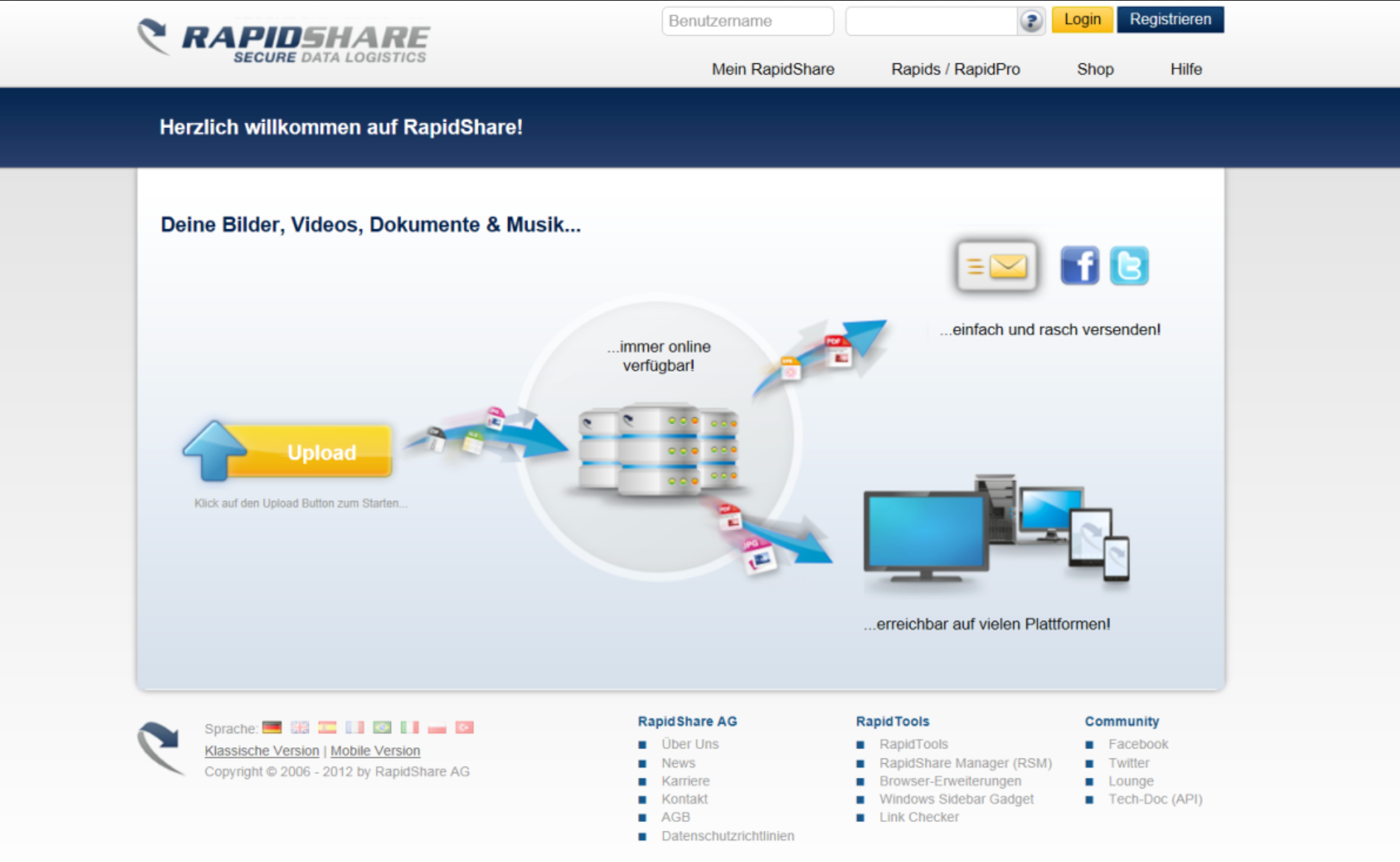
A screenshot of the Rapidshare Website in 2012 (archive.org)
In 2011 Christian Alexander Schmid stepped down as chairman of the board and was replaced by Alexandra Zwingli. She started to work at Rapidshare at 2006 and held the position of COO before.
They shifted their business model to a b2b cloud storage service and extended their product portfolio with a service called RapidDrive, which was a desktop client that allowed users to access their files directly embedded into their file system.
The fall
But things didn't quite work out. In May 2013 they had to lay off 45 of their 60 employees. And due to the new limitations they put in place, the number of users dropped continuously. While in 2009 one of the 20 most visited websites in the world, by 2013 they were already out of the top 1000. According to anonymous reviews of ex-employees on glassdoor.com, the atmoshpere at the company weren't the best either after the abrupt layoffs.
In February 2014 a "quit or be fired" ultimatum was communicated to 23 of its 24 employees and only one employee remained, who was tasked with handling support and answering the phone.
Finally in 2015 they announced that they would shut down the service completely.
The castle
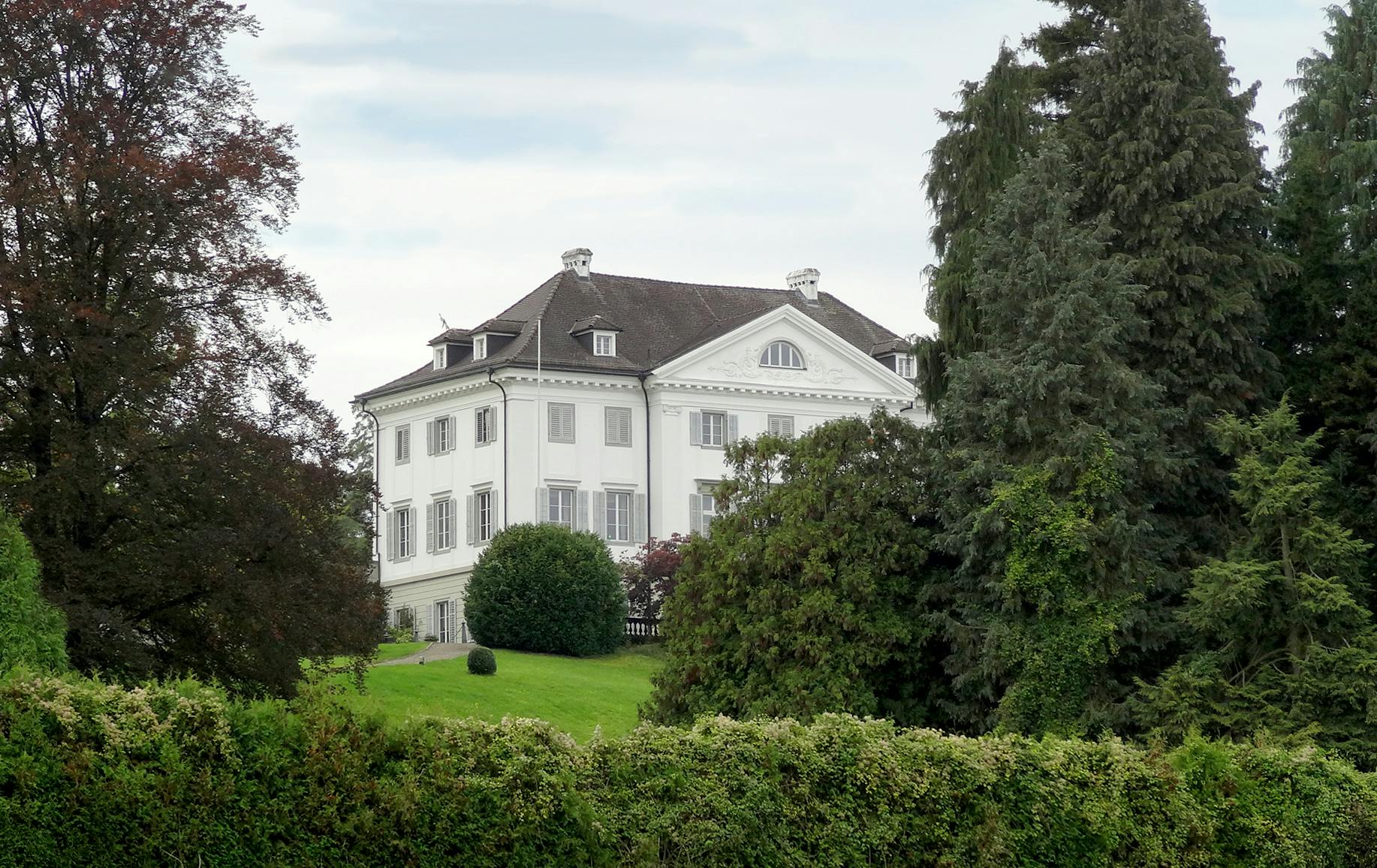
Castle Eugensberg in Salenstein, Switzerland (wikipedia.org)
Now even though the boat had sunk, this didn't mean that Christian Schmid didn't get to keep the bounty. He made so much money that he surely didn't have to work ever again and he developed a flair for castles over the years. In 2013 he bought Villa Margarita near Lucerne, then in 2014 he bought the castle "Roseck" near Tübingen, Germany.
But in an interview he stated that Villa Margarita couldn't quite fulfill all of his and his wifes requirements and that they now found the perfect estate with "Schloss Eugensberg" in Salenstein, Switzerland.
This castle was once built by the stepson of Napoleon and was sold to Christian Schmid for at least 35 million CHF. Even the last remaining lawsuit, that was still open the court of Zug, couldn't bother him and in 2019 all the charges were dropped anyway.
Nowadays he spends his time in his castle Eugensberg with his wife and plays around with electronics and microprocessors.
You can think of him what you want, but he surely caught the wave in the right moment and knew when it was time to stop.
Sources
-
Handelszeitung - Rapidshare-Gründer: Mehr Millionen als Nestlé-Chef
-
zentralplus - Internet-Mogul vor Gericht: So reagiert er auf die Vorwürfe
-
zentralplus - Deshalb wurden Chefs der Zuger Rapidshare freigesprochen
-
heise - Musikindustrie setzt weiter auf Websperren, Warnhinweise und Filter
-
NZZ - «Ich weiss nicht, was in Kim Dotcoms Kopf vorgeht», Alexandra Zwingli im Interview
-
NZZ Magazin - «Zu Besuch bei den Rapidshare-Millionären über dem Bodensee»